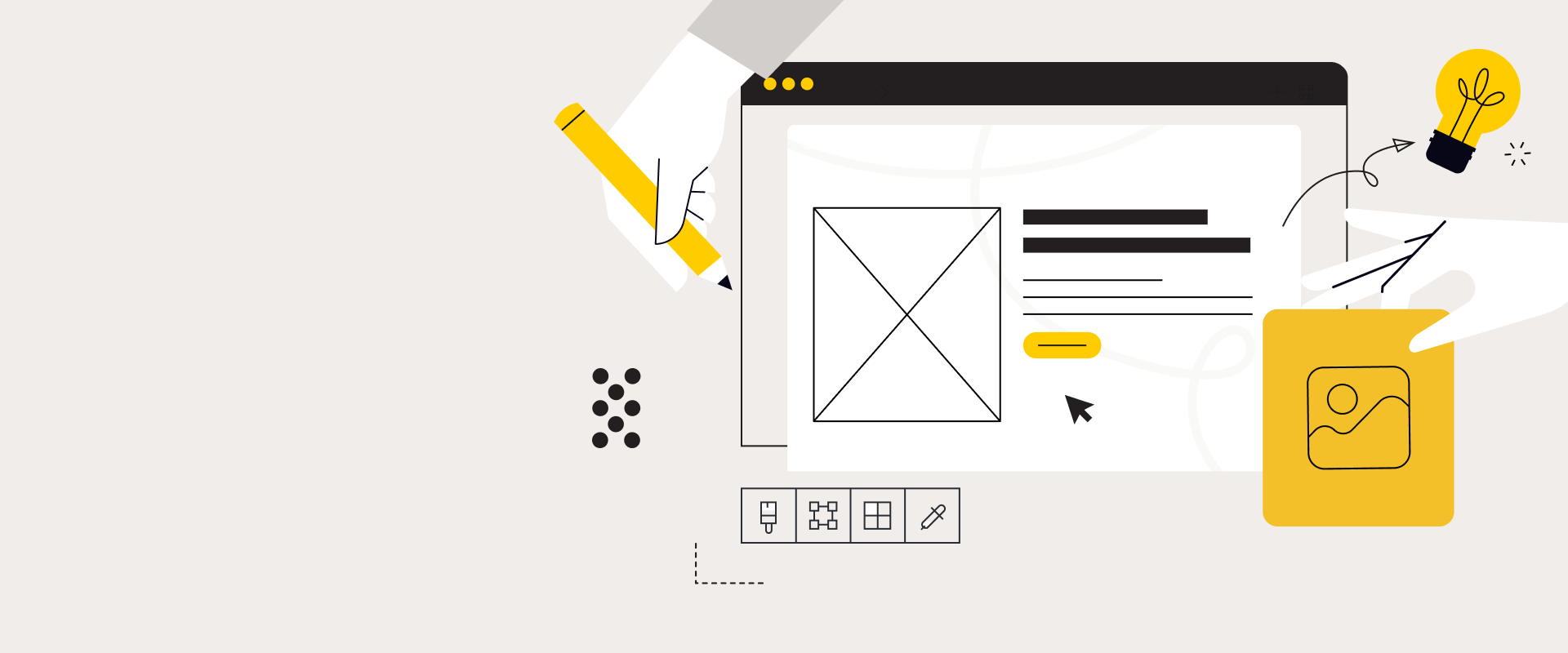Creating a website from scratch can be utterly overwhelming, especially since it takes an albeit strategic approach involving various varied elements. When designing your website redesign, it is important to grasp the essentials. Luckily, Big Drop is here to get you up and running with the basics in this article-you’re welcome!
What are the Basics of Designing a Website?
1. Know Your Objectives and Target Audience
First, define what you want to achieve with your website. For whom is it intended? These are the first questions our team works through in collaboration with our clients at the start of an engagement. Knowing these will keep you principled in design decisions and ensure that ultimately your website meets both user needs and business objectives.
2. Start with The Skeleton: Wireframes
Wireframes are the schematics of your site, showing the structure and how the page content is laid out without indicating the design elements. Wireframing is useful in helping you decide where everything will go, such as where navigation, content, and calls-to-action will be. This helps provide a natural user experience and logical flow.
3. Focus on User Testing
User testing is key in making an intuitive website. That means you’re trying to observe a real user using your site and find their pain points and what could be changed in order to improve the experience. Integrate user testing along the process to ensure navigation on your website is easy, and user expectations are met.
4. Prioritize Mobile Optimization
Over 60% of website traffic is sourced through mobile devices. The more users find your websites through their mobile phones, the more mobile optimization becomes binding and will continue to be so in the future. Design your website to be responsive-that is, it should look right and work right regardless of screen size. Mobile-friendly sites improve the user experience and the ranking of your website in search engines.
If you don’t know how you can expect to show up, how will others? Take this piece of the process one step further by testing on different browsers on different device-types to ensure an optimal experience – brownie points if you can test it on different network speeds as well. Consistency and preparation is what we’re aiming for here despite some elements being out of your control.”
- – James Weiss, Big Drop’s Managing Director
5. Add Branding Elements
Your website is a reflection of your brand’s identity. Use the same branding elements across websites for logos, color schemes, typography, and imagery. Consistent branding confirms recognition and furthers trust with your audience. Make sure those things are consistent throughout your site.
6. Be Cognizant of Navigation
Clear and intuitive navigation helps users quickly locate what they need. Use clear labels for your menu items, and keep the structure of your navigation simple and easy to work with. It goes without saying that a well-organized site increases user satisfaction while reducing bounce rates.
7. Pay Attention to the Quality of Content
The quality of the content is the most important aspect to keep your viewership intact. Ensure that the content on your website is relevant and effectively informed. It is better to incorporate a mix of text, images, and videos to give your site a more vibrant look. Regular updating of content will keep it fresh and relevant.
8. Speed Optimization
Website performance affects user experience, traffic, and search engine rankings. Compress images, get efficient coding, and cache resources to keep the site loading fast. Fast-loading sites help in raising user engagement and reducing bounce rates.
9. Implement SEO Best Practices
Search engine optimization (SEO) helps your site rank higher in search results. Apply relevant keywords, provide descriptive meta tags, and ensure your site is accessible. Good SEO behavior ensures organic traffic and increases visibility for your site.
10. Test and Iterate
Web development and design are a never-ending process. Always test your site for different types of problems, and review feedback in efforts to understand how it can be improved. You’ll want to utilize analytics to track user behavior and make your decisions based on those actions. Constant iteration over design ensures that the design is effective and works for users.
Conclusion
A website plays a crucial role beyond just being an online presence; it is a vital component of any marketing and business strategy. As a leading New York web design agency, we understand the importance of designing websites to deliver exceptional digital experiences that truly reflect each brand we workwith. Contact us at Big Drop today to learn how we can bring your digital vision to life..
